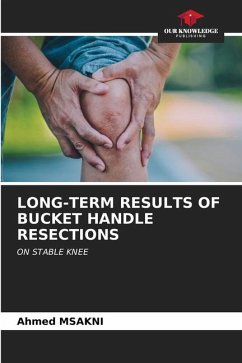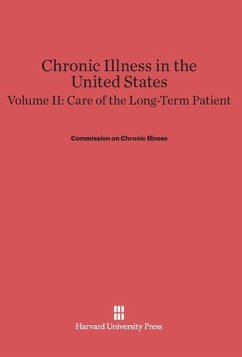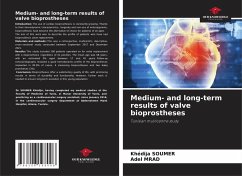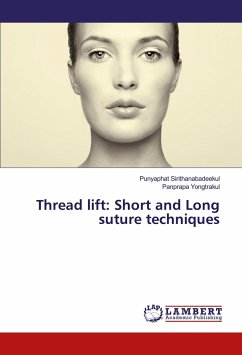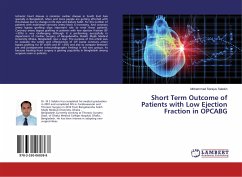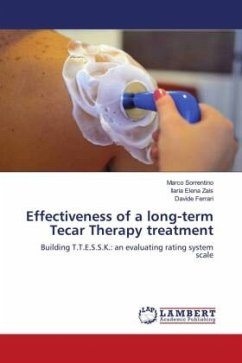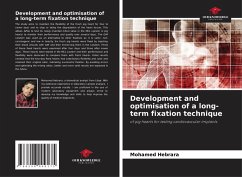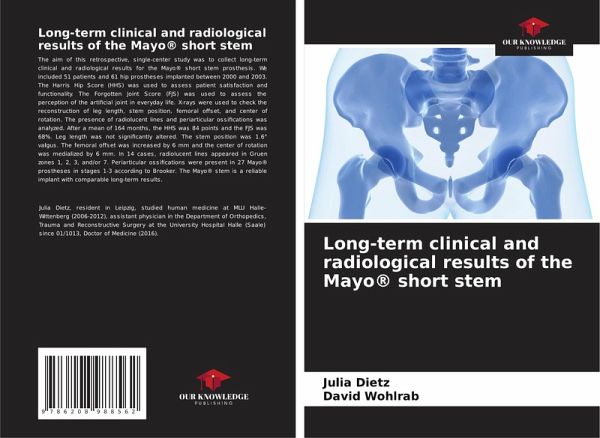
Long-term clinical and radiological results of the Mayo® short stem
Versandkostenfrei!
Versandfertig in 6-10 Tagen
40,99 €
inkl. MwSt.

PAYBACK Punkte
20 °P sammeln!
The aim of this retrospective, single-center study was to collect long-term clinical and radiological results for the Mayo® short stem prosthesis. We included 51 patients and 61 hip prostheses implanted between 2000 and 2003. The Harris Hip Score (HHS) was used to assess patient satisfaction and functionality. The Forgotten Joint Score (FJS) was used to assess the perception of the artificial joint in everyday life. X-rays were used to check the reconstruction of leg length, stem position, femoral offset, and center of rotation. The presence of radiolucent lines and periarticular ossification...
The aim of this retrospective, single-center study was to collect long-term clinical and radiological results for the Mayo® short stem prosthesis. We included 51 patients and 61 hip prostheses implanted between 2000 and 2003. The Harris Hip Score (HHS) was used to assess patient satisfaction and functionality. The Forgotten Joint Score (FJS) was used to assess the perception of the artificial joint in everyday life. X-rays were used to check the reconstruction of leg length, stem position, femoral offset, and center of rotation. The presence of radiolucent lines and periarticular ossifications was analyzed. After a mean of 164 months, the HHS was 84 points and the FJS was 68%. Leg length was not significantly altered. The stem position was 1.6° valgus. The femoral offset was increased by 6 mm and the center of rotation was medialized by 6 mm. In 14 cases, radiolucent lines appeared in Gruen zones 1, 2, 3, and/or 7. Periarticular ossifications were present in 27 Mayo® prostheses in stages 1-3 according to Brooker. The Mayo® stem is a reliable implant with comparable long-term results.




